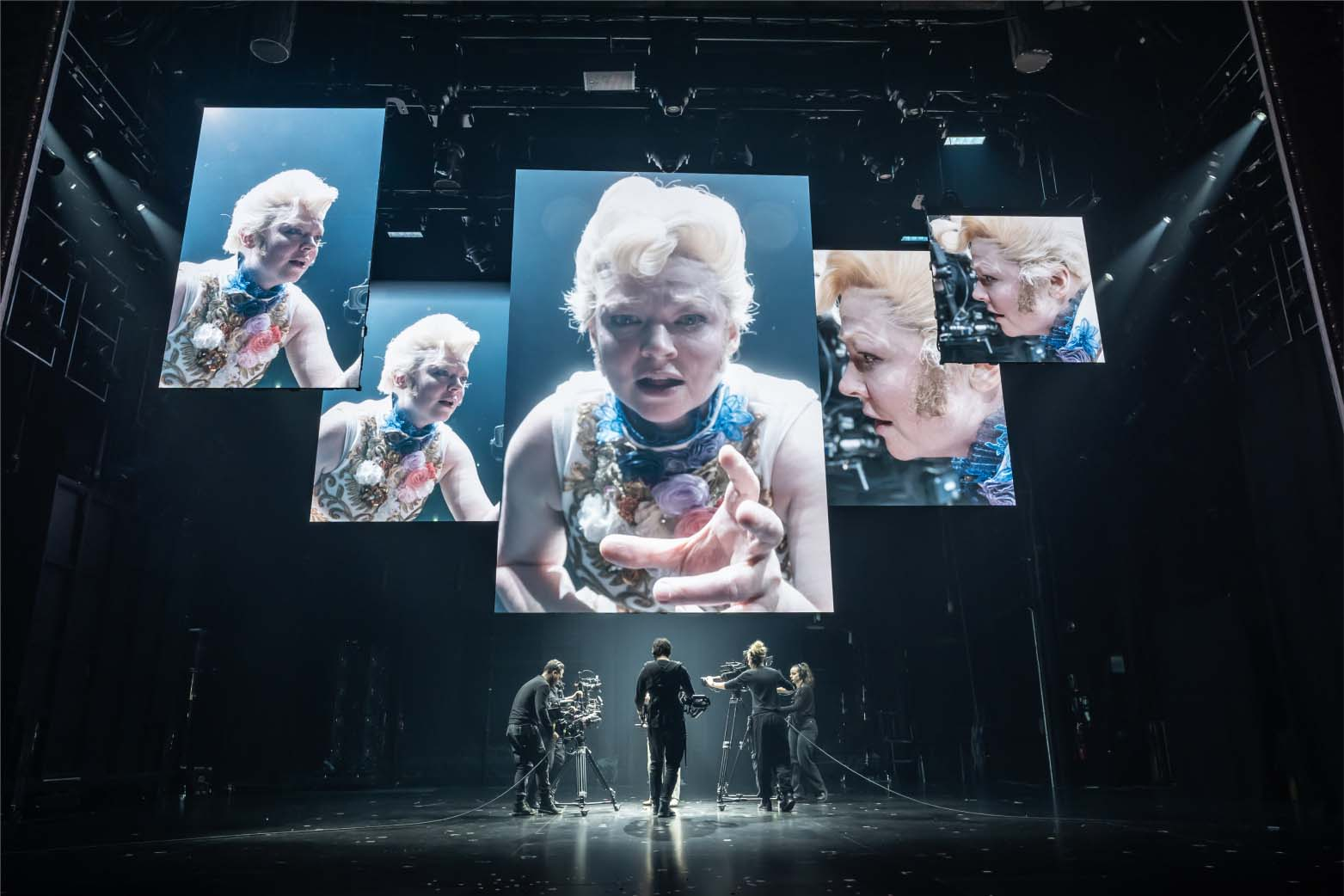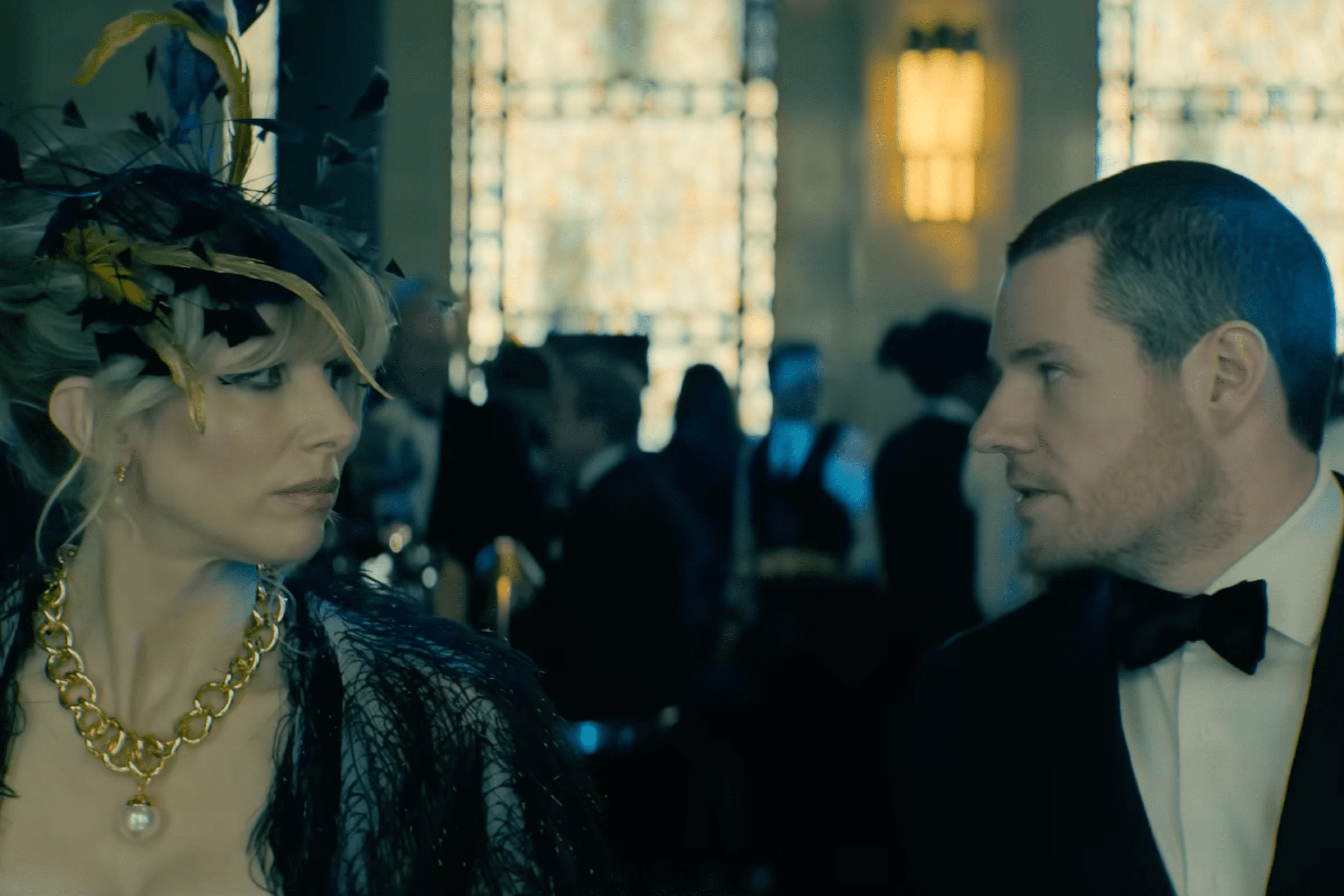For the first 20 or so minutes of The Picture of Dorian Gray, the Broadway adaptation of the Oscar Wilde novel as a one-woman show starring Sarah Snook, the production asks a genuinely disturbing question: "What if you were watching TV, instead?" At the top of the hour, Snook enters the stage without fanfare, surrounded by crew members—really, they should be considered performers, too—who will spend the next two hours filming her with compact cameras. She takes a seat behind the gigantic vertical screen in the middle of the stage, looks into a lens, and speaks to the audience two-dimensionally.
What follows is a by-heart reading of the start of the book—I'm pretty sure, at least, because I've never read it. Snook does the narration and the dialogue, and then the scope expands, but only sort of. Soon, Snook is costumed as Dorian—one of many characters she plays—and moves around the stage giving, basically, just that performance, as the young man poses for and then desperately admires a painting of himself. Filling out the show is prerecorded work: other Snook performances superimposed on screen or piped in as audio. In a dinner party sequence, for example, she performs live as Lord Henry while portraying the guests—all with their own elaborate costumes and ways of speaking—on the Broadway Jumbotron. In an adaptation of a story about vanity, the actress is playing with nobody but larger-than-life versions of herself.
It's not an overstatement to say that I despised this style of theater, if you could even call it that. While the words were intoxicating and the performer charismatic, the presentation felt cheap and deficient. While I have, at times, admired how screens can expand a Broadway stage, this time they felt like a shortcut. The plethora of Snooks would have made for a neat trick if I weren't watching in a theater. But Broadway demands more than camera gimmicks. I've seen one-person shows where a performer inhabits a multitude of characters without the benefit of technology or even costuming, and it felt like magic; this multiplication act was nothing more interesting than a timing exercise. The narration, compelling at the start, felt redundant as characters on screen simply did the things they were described doing. The idea of risk was practically nonexistent; as long as the one live actress stopped speaking at the right moment, everything was predetermined to run smoothly. It was automated work—performances that didn't require any real-time thinking—and thus felt like the antithesis of theater.
But if that opening was a stain on a medium, the remainder of the show worked to wash it away. The Picture of Dorian Gray eventually embraces its theatricality and uses its screens as collaborators, instead of crutches, in service of a thrilling tragedy.
Part of that later success is thanks to the structure of the story—it opens with restrained members of society having witty little chats, then dives into more monstrous and mystical acts that all work to isolate Dorian—but there's plenty of inventiveness from the show itself. Small, quickly constructed sets, like the room where the picture is stored, feel big when the camera magnifies them. The POV shots where the audience assumes the role of the portrait looking back at Dorian provide a very clear window onto his turmoil. The use of present-day selfie filters sounds like a bad idea on paper but is actually quite clever, spotlighting the way in which people warp their own image in pursuit of impossible standards. Best of all are the chaotic moments—a couple of song breaks and a few things more grisly than that—where Snook plays one character duplicated in several angles across the array of screens. In these sequences, Dorian Gray captures something immersive, relatable, and on-theme: that anxious feeling of looking in a mirror (or phone camera) from all possible angles until you find the one that soothes you.
It's a precarious balance, making sure the screens are augmenting the live action and not supplanting it—the climax, a chase in the woods that was filmed in actual woods, stumbles with the collision of theater scenery and captured nature. But for the relentless pursuit of pristine youthfulness at all costs, there's certainly no more important tool than the camera.
Is it even more critical to the show than Snook herself? After some deliberation, I would say no. While I initially rolled my eyes when she stood silent during pre-recorded bits, the sheer amount of live prose that she delivers over the course of the night piles up into a feat of memorization. None of her characters, even the tiny parts, feel incompletely realized, and her energy gives the story an F1 pace, even at an intermissionless two hours. My best comparison here is Robin Williams at the peak of his cocaine habit, jumping between voices without ever flagging, but that doesn't do it justice.
I don't really want anyone else to try what she's doing, though the commercial success of this show could certainly herald a trend. I prefer my theater created in the moment as much as possible, and the sheer hustle that goes into a one-person show night after night is a huge part of the appeal for me. In telling this particular story at this particular time, however, Dorian Gray manages to connect with modern concerns about the human cost of artificial beauty that Wilde prophesied in the 19th century. At the end, it's maybe a little reassuring, actually, that he did it with nothing more ostentatious than words on a page.






